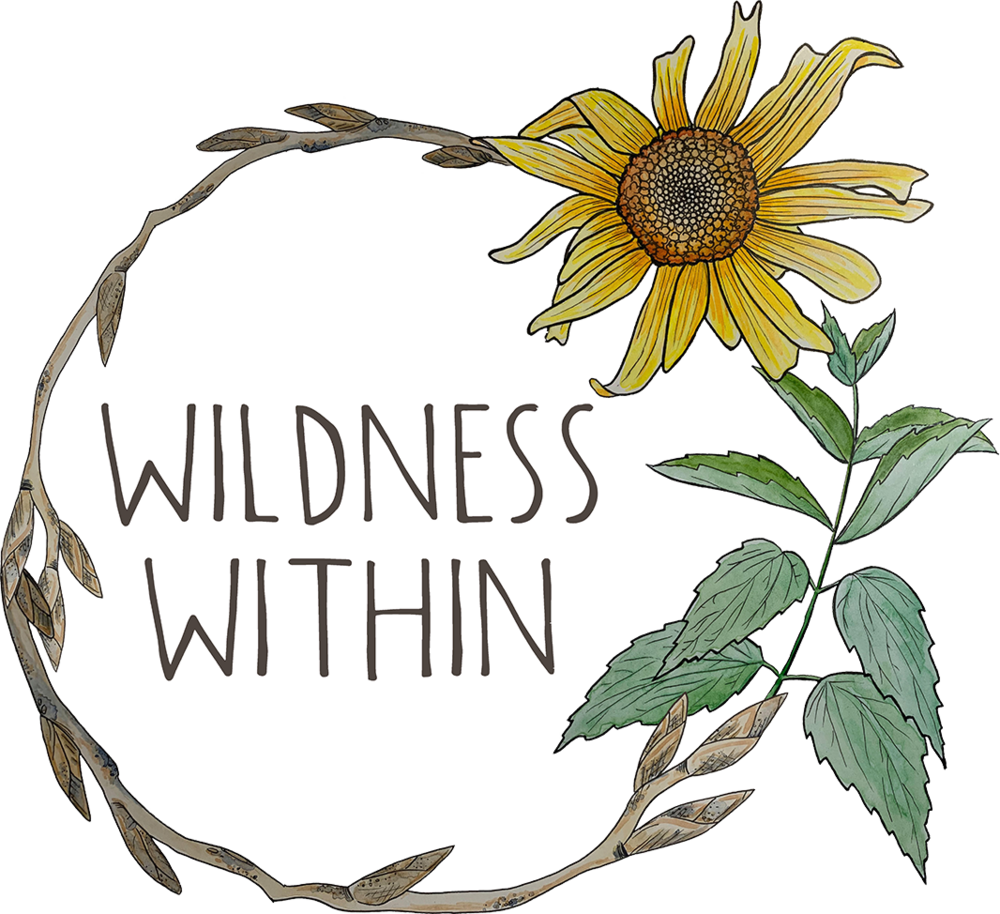Photo by Rachael Witt
Common Names: Achillea, Devils Plaything, Devils Nettle, Soldier’s Woundwort
Botanical Name: Achillea millefolium
Plant Family: Asteraceae, Aster family
Parts used: Whole plant: Flowers, leaves, stems (not as medicinal) and roots
Taste: Aromatic, bitter
Energetics: Warm (and yet cooling), dry, spicy, bitter
Actions: Anti-inflammatory, antirheumatic, antiseptic, antispasmodic, anodyne (relieves pain), aromatic, astringent, carminative, diaphoretic, digestive, expectorant, hemostatic, hypotensive, stomachic, tonic
Identification:
· Yarrow has alternate leaves that are in finely cut segments, giving each leaf segment a feathery appearance (a.k.a “bipinnate” or “tripinnate”).
· Yarrow flowers in the summer and, A.millefolium has white flowers while other species or subspecies have pink, yellow or red flowers. The flowers look like tiny little daisies (both ray and disk flowers).
· The cluster of flowers (a.k.a “inflorescence”) is flat-topped and has loose heads (cymes) that are terminal (at the end of the flowing stalk).
· The whole plant has white, silky, appressed hairs, making it “pubescent”.
· But, most of all, people recognize yarrow by its strong sweet scent, that you will also taste in teas or tinctures of the herb.
· Yarrow is commonly found growing in dry soils of grassland, meadows and other clearings or roadsides. Once you i.d. it, you’ll start to see it everywhere.
· Depending on the environment it can grow from 1-3 feet tall.
Yarrow Medicine
According to Greek mythology, Achilles painted himself with a solution of yarrow to make himself invulnerable to arrows. His commitment to using this herb was said to have spread throughout his regime. As men who fought with him carried dried yarrow to make spit poultices and stop bleeding amongst wounded soldiers.
The Micmac people of Maine, New Brunswick and Nove Scotia chewed the stalks to induce sweating to break fevers or help restore the body when taken by a cold. They also made poultices with the stalks to apply to bruises, sprains and inflammation.
Though not “medicinal,” yarrow can even be found in Chinese culture, yet mainly for consulting the oracle by manipulating yarrow stalks in reading the I Ching.
From folklore tales, historical uses and medicine case studies, we’ve concluded that yarrow can be used for the following:
· Yarrow can stop heavy bleeding (pretty miraculously). It is commonly used for hemorrhoids, cuts, scrapes, post-partum care, and bruises. It can even be used to treat mouth sores.
· Yarrow can also stop internal bleeding. Examples include excessive bleeding associated with uterine fibroids, bleeding hemorrhoids, urinary bleeding, coughs that produce bloody mucous, nosebleeds, and bleeding ulcers. (Rosalee de la Foret)
· And also promotes circulatory flow, hypertension? Vericose veins?
· Yarrow root for toothaches or spongy gums (make a tincture of the root and take internally) (Michael Moore).
· Yarrow works as a wonderful bug repellant.
· It can be used for colds and flus, especially when a dry fever is present. Yarrow’s ability to promote sweating has made it a sacred herb used in sweat lodges.
· Yarrow is an anodyne, quite effective at relieving pain. It can be used topically on bruises, musculoskeletal pain, and even arthritis. (Rosalee de la Foret)
Yarrow is my go-to herb. I always have a tincture at hand or dried flower and leaf material. I find that yarrow can help with nearly any problem I am dealing with. Even if I have a stomach ache I’ll take some yarrow to help ease my digestive pains (but I do prefer other herbs for digestion, if they’re around). Mostly, I use yarrow as a “disinfectant”. When I cut myself or need to clean a wound, I use yarrow. When I feel the onset of a cold, I use yarrow.
Spend time with yarrow, smell her sweetness and taste her bitterness. See what herbal remedy she brings to you..
Yarrow Remedies
Combinations:
Fever: elder flower, peppermint, boneset, cayenne and ginger
High blood pressure: hawthorn, lime blossom and mistletoe
Tea:
In a small pan, combine 1 tsp of the dried herb, chopped or crumbled, with 1 cup cold water. Cover the pan and bring the mixture to a quick boil, letting it steep for a while before straining it. A daily dose is 3 cups.
Tincture:
Mix the fresh juice with an equal amount of wine spirits (70% alcohol). Let the mixture steep in a closed container for 3 weeks before straining it into clean dropper bottles. A dose is 30 drops taken 3 times daily.
First Aid Kit:
Keep a tincture in your first aid kit, or have a container with dried, ground yarrow flower and leaf. Use the tincture to clean wounds and stop bleeding. Put dried herb on open wounds to help stop bleeding.
Yarrow Natural Insect Repellent:
Gather enough yarrow leaves and flowers to fit snugly in a jar.
Chop them up and put them in the jar.
Pour in vodka to the top of the jar.
Shake it every day for a first week.
Strain after 2 to 6 weeks.
Pour desired amount into a spray bottle and add catnip, lavender, lemon or lemon verbena essential oils.

